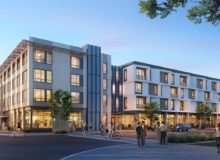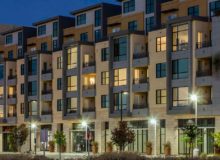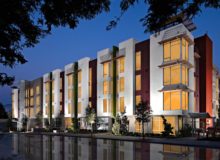The Mercury News
December 16, 2022
Keri Brenner
Nearly 43% of Marin school staffers cannot afford to rent a studio apartment in the county, according to a new report.
“A single earner in a household would need to work for 10 years in a district and hold both a teaching credential and a master’s degree before being able to afford a studio apartment in Marin,” said report researcher Robin Pendoley of Marin Promise Partnership, a network of organizations promoting educational equity.
Unaffordability, defined as having to pay more than 30% of monthly income for housing, was even higher for educators of diverse backgrounds or those who are younger, according to the report, titled “Affordable Educator Housing In Marin County.”
About 58% of BIPOC educators — for Black, Indigenous or people of color — and 55.5% of younger educators, or those from 18 to 39 years old, were unable to rent a studio apartment in Marin, Pendoley said.
“If educational equity and improving student outcomes is a priority in our county, then diversifying Marin’s educator workforce is essential,” Pendoley said. “That means we need to ensure that our teachers and school staff can live in the same community as the children and families they serve.”
The study was produced with data and assistance from 10 Marin educational institutions and coordinated through Marin Promise Partnership. It links Marin rental information with salary schedules from local school districts, both for teachers and classified employees such as janitors and office staff.
The numbers show why Marin schools that want to hire a more diverse workforce are having difficulties, said Stacey Farrell, a social studies teacher at San Rafael High School.
“We need teachers — and specifically, more diverse teachers — so that our students can see themselves in the teachers,” said Farrell, who is working with Marin Promise Partnership to increase equity and diversity in the local teacher population.
She is the lead teacher in a new program to offer high school students classes to prepare them for careers in education. San Rafael High School’s “Educator Academy” seeks to plant the seeds for students, particularly those of color, to go into the profession.
Farrell said she hopes that by the time program participants earn their degrees and teaching credentials, and perhaps seek to return to their former schools, more workforce housing will be available in Marin.
“We hope this work will prioritize and make it possible for more educators to live where they teach in Marin,” Farrell said. “We want to make it possible for us to hire a more diverse education workforce.”
Marin Promise Partnership, the Marin County Office of Education and other local education institutions are working on creating such housing.
In an earlier survey, 57.5% of educators indicated that they would be interested in affordable, employer-provided housing if it were available. The number was 64.1% among educators of color and 65.4% for respondents 18 to 39 years old.
The proposed Oak Hill Village affordable housing development near San Quentin State Prison includes 101 dwellings for Marin educators, Pendoley said. An online meeting about the project was held last week.
Even with the project, the housing report data suggest that the county would need another 1,400 more dwellings just to meet the demand from the 10 Marin education partner institutions alone, Pendoley said.
“Oak Hill Village is a first of its kind development in Marin County,” Pendoley said. “Education institutions and municipalities throughout the region will be watching it closely in the coming years to learn how to develop and manage similar projects.”
Ken Lippi, a director at the Marin County Office of Education, said the MCOE and Marin County are working with Marin Promise Partnership to make Oak Hill Village a reality as soon as possible. Staff members at MCOE participated in the earlier survey on educator housing, he said.
“The high cost of housing and living in Marin is significantly impacting our ability to attract and retain our school staff,” Lippi said in an email. “The good news is that significant steps have now been taken by MCOE, the County of Marin and the project developers to make Oak Hills a reality.”
Lippi said the county “looks forward to the success of this project leading to other similar projects for educator and workforce housing in Marin.”
Itoco Garcia, superintendent of the Sausalito Marin City School District, said his district is planning for a mixed-use housing project on 3.2 acres on the district’s Sausalito campus at 636 Nevada St.
The district, which is also building a new elementary school on the Sausalito campus, is in discussions with developers to construct a 60-home complex. Twenty residences would be set aside for workforce housing, and the rest for other buyers.
Garcia said Sausalito might be able to use the project to help meet its required housing targets.
“Without workforce housing, it’s likely to get harder and harder for educators or other workers to live in Marin,” Garcia said. “It’s not like the 1980s Marin, where there were still some hippie houses people could buy and afford with a working class job.”
Garcia said many of his staff members are commuting up to an hour to come to work.
“The reality is, unless you’re living in a longtime family home or have a spouse who is not working in education, you can’t live in Marin County,” he said.
According to the report, the fair market monthy rents in Marin reported by the federal Office of Housing and Urban Development during fiscal year 2021 were: efficiency or studio, $2,350; one bedroom, $2,923; two bedroom, $3,553; three bedroom, $4,567; and four bedroom, $4.970.
To see a video copy of the report, visit the website at MarinPromiseParternship.org.









